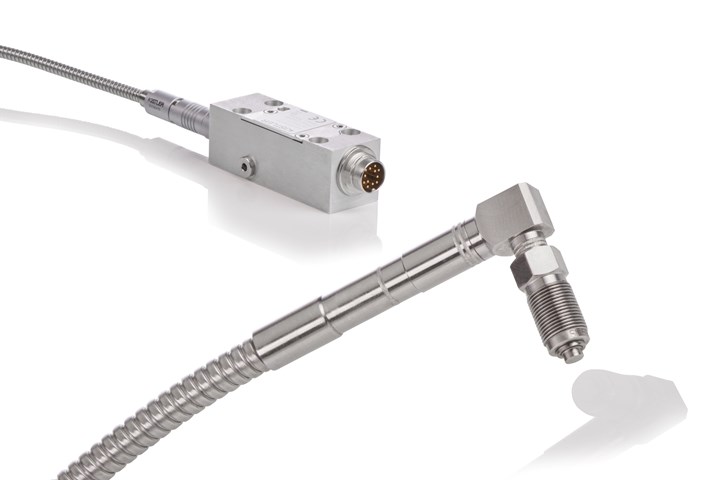Melt Pressure Sensor Takes Measurements Directly in the Nozzle
Kistler’s ultracompact Type 4004A piezoresistive pressure and temperature sensor can be applied in hot runners and 3D printing applications.

The new 4004A miniature melt pressure sensor from Kistler allows for measuring pressure and temperature directly in the hot runner at temperatures up to 350°C. Photo Credit: Kistler
Kistler has introduced the Type 4004A piezoresistive melt pressure sensor, featuring a front diameter of 3 mm, which enables it to operate directly in injection nozzles and small extruders. In these spaces, it can measure both pressure and temperature in direct contact with the plastic melt, with potential applications in hot runner systems and additive manufacturing.
With an operating and measurement range of up to 350°C, the 4004A melt pressure sensor can be used directly in the hot runner to deliver precise measurements of pressure and temperature in injection nozzles and extruders.
For the two different processes, the 4004A features two separately calibrated pressure ranges, going up to 2,500 bar (36,000 psi) for hot runners and up to 1,000 bar (14,500 psi) for additive manufacturing. Changes in the pressure signal could detect debris in small nozzles, wear in the nozzle or melt backflow.
Access to key parameters comes via transducer electronic data sheets (TEDS), and since the sensor’s diaphragm is made of hardened steel with an IP65 degree of protection, the 4004A can be used for applications involving fiber-reinforced plastics. It can also be operated in medical and food packaging sectors since no oil or mercury are used to transmit the signals.
The temperature-compensated pressure signal can be accessed via the analog output or the sensor's RS232 interface. This allows it to connect to Kistler’s ComoNeo process monitoring system.
Related Content
-
Hands-on Workshop Teaches Mold Maintenance Process
Intensive workshop teaches the process of mold maintenance to help put an end to the firefighting culture of many toolrooms.
-
Revisiting Some Hot Runner Fundamentals
What exactly does a hot runner do? If you’ve been in the injection molding industry for any length of time, you might think the answer is obvious, but it is not.
-
Solving Mold Alignment Problems with the Right Alignment Lock
Correct alignment lock selection can reduce maintenance costs and molding downtime, as well as increase part quality over the mold’s entire life.














